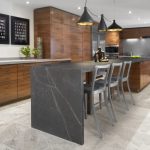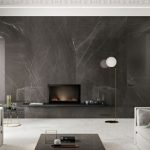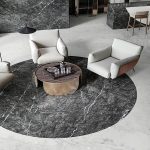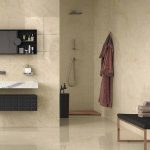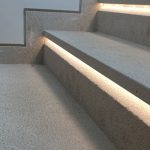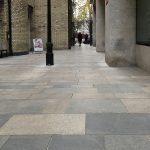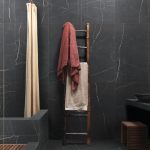Veneer Stone versus Natural Stone Pros and Cons

Veneer Stone versus Natural Stone Pros and Cons; Structural Use, Appearance, Color and Installation
Veneer stone adds flair full of character and texture while natural stone also has many nice features. Many homeowners and designers opt for natural stone because it comes with so many benefits. But, you might be wondering whether you should choose thin stone over thick stone.
While stone veneer is about twice as heavy as the faux version, it is a lighter, more convenient alternative to full block stone. Plus, there are some installations that are just too difficult to use with the heavier product. Use this guide to learn more about the differences and why thin stone veneer is a more durable and easier option than traditional stone.
Veneer Stone Character and Texture
Whether it is featured on a fireplace or the exterior of the home, stone veneer adds flair full of character and texture. While MSI provides consumers with real stone products, not all veneers available on the market are true pieces of the thinly cut limestone, sandstone, or granite. These look-alike materials, on the contrary, are made from a mold containing concrete colored with iron oxides to help mimic the look of the intended stone.
So why go faux when you can give your home high-end style with the real thing? How can you tell the two apart? Which stone product should you purchase and install for your home cladding, fireplace, wainscot, and other architectural details?
What Is Veneer Stone?
Veneer stone, architectural stone, manufactured stone, and Cultured Stone (a Boral company trademark often used to indicate manufactured stone) are different names for what is essentially the same product: engineered stone meant to look like natural stone. This product is a slurry of Portland cement, aggregates, and iron oxides baked in textured molds to look like stone.
Cement lends stability to the product and iron oxides provide pigments. Veneer stone should not be confused with faux veneer stone, a high-density polymer product that feels closer to Styrofoam than to stone.
Veneer Stone Pros
- Easy to cut
- Predictable quality
- Uniform sizes
- Easy to obtain
- Light
Veneer Stone Cons
- Color may fade
- Homogeneous appearance
- Brittle

What Is Natural Stone?
Natural stone, of the type that is used in homes, is 100-percent stone quarried straight from the earth, with nothing added or removed, and no color additives. Natural stone can be wholly real in shape, such as rounded river stones. Or natural stone can be carved to the desired shape, such as blocks for building, sheets for walls, or tiles for flooring.
Natural Stone Pros
- Valued appearance
- Durable
- Colorfast
Natural Stone Cons
- Hard to cut
- Heavy
- Dense
- Difficult to source
Veneer Stone Structural Use
Manufactured veneer stone is too weak to be used structurally for building purposes. Veneer stone can hold up its own weight, but it cannot carry additional weight. Veneer stone is never used for flooring. Real stacked stone is never found with veneer stone since veneer stone is just that: a veneer. However, veneer stone can successfully mimic the look of stacked stone.
Natural Stone Structural Use
Natural stone can be used structurally, though this is becoming a rare practice in modern building. When you want authentic stacked stone, you must use natural stone. Some natural stone, such as slate, is too brittle for structural uses. Natural stone, such as travertine, is commonly used for pathways, flooring, and walls.
Size, Weight, and Thickness.
Veneer Stone and Natural Stone Thickness
Full-dimension veneer stone starts at around 2 inches thick and increases to around 6 to 8 inches thick. A sub-category called thin stone veneer ranges from 1-inch to 2-inch thick. Veneer stone face sizes can be as large as 14 inches in diameter.
Veneer stone is about half the weight of natural stone of the same size.
Natural stone on the wide consumer market mostly comes in two sizes. Full-size blocks approximately the size of one or two retaining wall blocks can provide full-dimension coverage and the stacked look that many homeowners desire.
For a veneer-style cover, natural stone is quarried and then cut into slices with an industrial-size, similar to a wet tile saw. Though veneer, this is still 100-percent natural stone and measures about 3/4-inch to 1 3/4-inch thick. Face sizes for natural stone depend on the type of stone, but tend to stop at around 18 inches in diameter.
Natural stone is far heavier than veneer stone. For example, natural fieldstone is about 13 pounds per square foot, more than twice the weight of manufactured veneer stone.
Veneer Stone and Natural Stone Appearance and Color
Veneer stone’s colors can fade over time. Inexpensive, inferior manufactured stone can be a tempting purchase, but often its appearance is lacking. It can have highly repetitive patterns or monochromatic colors and be as little as 1-inch thick. Be sure to read the manufacturer’s specifications before purchasing and order samples. With veneer stone, quality tends to be consistent.
Natural stone is never repetitive and generally it has a pleasing appearance. Quality can sharply vary, though. Natural stone’s colors can fade with sunlight but at such slow rates that it will not be noticed within a person’s lifetime.
Veneer Stone and Natural Stone Installation Procedures
Manufactured veneer stone installs with lath, a scratch coat, mortar, and grout or no grout for the dry-stack appearance. In terms of installation, the main differences between manufactured veneer stone and natural stone are weight and density. Manufactured stone is far easier to handle and to cut than natural stone because it is porous and lightweight. Manufactured veneer stone lends itself to do-it-yourself installation more so than does natural stone.
Natural stone can be installed directly on porous concrete, stone, or block. If the surface is smooth, you can attach metal lath and a scratch masonry coat to provide a surface for thin sheets of stone to grip. Grout is added between the stones. Alternatively, the stones can go grout-free for a dry-stack appearance. Natural stone cannot be installed on drywall or other thin materials. Due to its density, natural stone is difficult to cut.
Should You Install Veneer Stone or Natural Stone?
Why use man-made veneer stone if the resulting product is more homogeneous than natural stone? And why do this if the installation process is roughly the same between the two? Predictability, it is one reason why do-it-yourselfers prefer manufactured veneer stone over natural stone. Manufactured veneer stone comes in predictable sizes that are easy to carry, cut, and hang. For high-end or historically accurate installations, natural stone may be your best choice.
To learn more about us, click here.
Send your price quotes directly to our WhatsApp through this Link: https://wa.link/ord5k8
Sources
www.thespruce.com/natural-stone-vs-veneer-architectural-stone-1821084
en.wikipedia.org/wiki/Stone_veneer
www.msisurfaces.com/blogs/post/2019/06/28/real-stone-vs-stone-veneer-whats-the-difference.aspx
- Back To Articles
- armani grey marble installation, marble installation, natural stone, natural stone appearance, natural stone cons, natural stone definition, natural stone installation, natural stone pros, natural stone structural use, natural stone thickness, pietra grey marble installation, veneer stone, veneer stone cons, veneer stone definition, veneer stone installation, veneer stone introduction, veneer stone pros, veneer stone structural use, veneer stone text, veneer stone thickness
Article
Natural Stone Applications
- 22 December 2022
Iranian Stones Introduction According to Source and Quarry
- 21 December 2022
Technical Stone Introduction and Quarrying Procedures
- 21 December 2022
Categories
- blog757
- news1
- Specialized articles756

